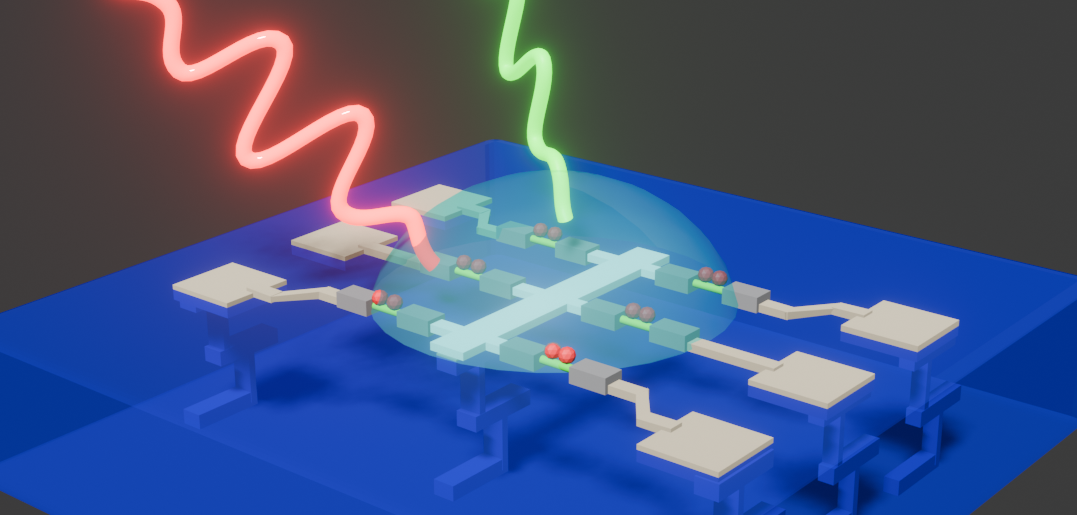Nanoscale hybrids: a new paradigm for energy-efficient optoelectronics
Vision
The goal of this project is to investigate how to maximally extract information from the photon field by leveraging the unique properties of nanoscale materials. Our objective is to achieve optimal photon detection while simultaneously enabling in-sensor pre-processing of information, creating a fundamentally new class of intelligent photonic sensors.
Approach
Conventional sensor architectures transmit raw outputs to downstream electronics for analysis, leading to high power consumption and communication bottlenecks. In contrast, our design incorporates pre-processing at the sensor level, directly inspired by the bio-architecture of human vision. In the retina, sensory cells and processing neurons are integrated, and the visual system transmits compact, pre-processed signals to the cortex rather than raw images. By mimicking this strategy with engineered nanoscale materials, we can both sense and process optical information at the point of capture, drastically reducing downstream computational load.
Why It Matters
Traditional imaging and sensing systems face a growing data bottleneck, where massive sensor outputs demand significant energy for transmission and computation. Our bio-inspired approach directly addresses these challenges by:
Reducing bandwidth requirements via local feature extraction and signal compression.
Achieving extreme sensitivity, including the potential for single-photon-level operation at room temperature.
Lowering power consumption, enabling scalable deployment in distributed or embedded sensing platforms.
By embedding intelligence directly into the sensing hardware, this work has the potential to jfljflkjadlfkjalsdjflakhoujaroiwhaerfl ajflakdjf;lajf ljslajdflajfaf

